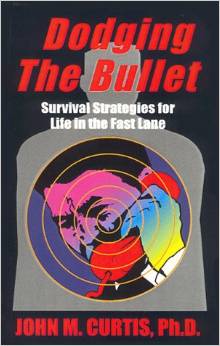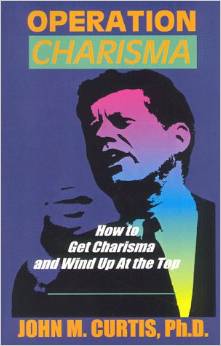Forecasting a recession in 2017, Bank of America-Merrill Lynch’s head of equity and quantitative strategy Savita Subramanian confirmed the U.S. economy remains fragile, despite the Federal Reserve Board’s record low interest rates since 2008. Former Pimco CEO and Allianz chief economic advisor Mohamed El-Erian continues to berate Fed Chairman Janet Yellen’s reluctance to hike rates so far in 2016. Yellen pulled the trigger only 25 basis points Dec. 15, 2015, failing to follow up with more rate hikes this year. “I would have hiked rates in September,” said El-Erian, criticizing the Fed but saying nothing about growing prospects of a recession in 2017. “I [also] think they missed a window last year. I would normalize,” referring to Yellen’s reluctance to hike rates. El-Erian complains about the Fed’s artificially low interest rates inflating a Wall Street asset bubble.
El-Erian looks at the same metrics as Yellen, showing the U.S. economy has been stagnated at about 1% Gross Domestic Product growth for about eight years. When asset prices collapsed in Japan in 1991, Japan’s once mighty economy went into an historic collapse called the “Lost Decade,” morphing today into the “Lost Score,” now approaching a 27-year recession. Japan’s GDP dropped from $5.33 trillion in 1995 to $4.36 trillion in 2007, continuing its unending slide. El-Erian’s advice to start hiking rates in a looming recession guarantees Wall Street would sell off, plunging the U.S. economy into recession in mid-2017. “We are seven years into a full-fledged, all out, central bankers doing everything they can to stimulate demand,” said Subramanian, warning against an impending recession. If Yellen listened to El-Erian, the stock market would plunge the economy into recession.
Whether artificial or not, Yellen needs to keep as much stimulus in the economy as possible or face growing prospects of re-starting quantitative easing, the Fed’s bond-buying program ended Oct. 29, 2014. Looking back, it’s possible that had Yellen tapered, not ended, QE3, the nation’s GDP would be growing at a faster clip. Economists worried in 2014 that the Fed was adding too much debt onto the U.S. balance sheet, now approaching $20 trillion in national debt. Subramanian sees the current stock has not yet discounted asset prices, something bound happen in the next equities sell-off. With the S&P only 1.8 percent under its record high of 2,103.81, despite this year’s price target of 2,000, there’s little room up. Yellen finds herself caught between a rock-and-a-hard place to hike the federal funds rate. Unlike El-Erian, still harking back to the good old days, Yellen won’t hike rates, then cut them next year.
Acting like there’s nothing wrong with President Barack Obama’s economy, Democratic nominee former Secretary of State Hillary Rodham Clinton, keeps going back to how bad things were under former President George W. Bush. While it’s true things are better today than the 2008-09 Great Recession, it’ also true the U.S. economy has stalled out. Yellen hoped, in announcing no rate hike at the Federal Reserve Board’s Open Market Committee Sept. 15, she could hike rates in December. With the prospects for recession high, it’s growing more likely that Yellen won’t hike in 2016. “The risk of financial instability down the road is getting higher and higher. And the longer we stay at these artificial, ultra-low rates the more we fuel financial instability down the road,” said El-Erian, not facing reality that the new normal, like Japan, is perpetual stagnation for the U.S. economy.
GOP nominee real estate mogul Donald Trump offered a new approach on fiscal policy to help stimulate the economy, something that worked during the Reagan administration [Jan. 20, 1981 to Jan. 20, 1989.]. El-Erian and others agree the Fed has limits to stimulate the economy, it’s up to lawmaker to tinker with fiscal policy to deal with punitive taxes and regulations. With the economy nearly a decade out with flat GDP growth, any recession would certainly hurt jobs growth, leading to lower consumer spending. Sluggish consumer spending, accounting for about two-thirds of U.S. economic growth, hasn’t jumpstarted the economy under Obama. Hillary’s plan to stay with the Obama economic policy guarantees the U.S. economy ends up like Japan’s. Without some radical changes to fiscal policy, there’s no reason to believe that the economy will change anytime soon.
Before the Fed can start hiking rates, there’s more the Congress can do to streamline fiscal policy and government regulations to stimulate the economy. Hillary’s plan to raise taxes on the rich or middle class goes in exactly the wrong direction. Trump’s proposed cutting corporate and small business tax rates from 35% to 15%, something that bound to put more cash back in the consumer economy. With the economy hovering on recession, there’s no room for errors, especially squeezing more cash from the rich. “I think that speaks to the reaction function of the market. There are a lot of itchy trigger fingers. There are lot of violent trades that can really roll a fairly complacent environment,” said BofA’s Subramanian, worried that any bad news could trigger a major Wall Street sell-off. El-Erian’s bromide of hiking rates can only make matters worse, both short and long-term.



